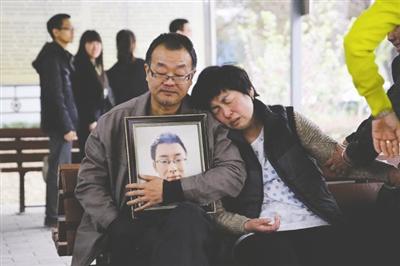Healthcare : serving the needs of the majority
From the angle of public health, healthcare should serve the majority of people. This applies not only to health services but also payment models. However, in China, many of the emerging healthcare models try to transfer the most valuable healthcare resources from the public system and apply them on a minority of people who can afford the high-quality services. This includes the star doctor clinics, overseas treatment, and high-end health check-ups. The problem of these business models is that they rely heavily on the famous specialists, who are expensive and busy. These star doctors are not aimed at serving the majority of people and they are not positioned to do so. This is the reason why these business models lack the volume for growth.
On the other hand, mobile health in China also suffers from the similar problem. Due to the under-development of China’s primary care, people don’t trust primary care doctors and those from small hospitals. Patients crowd into tier 3 hospitals for famous doctors even for routine problems. Therefore, many emerging mobile health companies try to grow their traffic by claiming that they have star doctors on hand to provide healthcare services for users. However, the logic behind does not work because of two reasons. First, star doctors with high revenues do not care about the neglectible amount of services fees from mobile health businesses. Second, the star doctors do not have time or energy to deal with routine health issues, the key needs from the mobile side, and they are not positioned to do such businesses.
The large scale hospitals in China also suffer from the same problem. At first glance, the larger the hospital is, the more people they can serve. For example, the Zhenzhou No 1 hospital grew to 7000 hospital beds in 5 years, obtaining more advanced medical machines and attracting more famous doctors. However, the expansion in scale gave the large hospitals lots of power in services and products. Payers and patients find that it becomes harder and harder to impact the giants in service flow, service quality, and treatment methods. More and more specialists choose their careers in large hospitals, leaving primary care facilities weak in service capabilities. At the same time, people find it harder to get a bed in the giant hospitals, waiting in long lines for a small problem. By centralizing the best doctors in a large organization, the giant hospitals actually make healthcare less efficiency and lowered healthcare service quality. The growth in size does not benefit the majority of people in a long run.
From the above three aspects we can see that a key issue for China is that many business models cannot serve the need for majority of people. Service models relying on star doctors to offer routine health services do not work well. A solution for the problem is primary care.
The goal of primary care is to serve the majority people, dealing with routine issues at an affordable price. If it is primary care doctors, not large hospitals or star doctors, who provide the services in above three business models, the results could be totally different.
First, primary care doctors can deal with the majority of healthcare needs. The key issue is how to price the services. The public hospitals rely heavily on drug sales as the revenue stream and the service fees are underpriced. If the primary care facilities want to survive purely on service fees, they will need to price the service 20 to 30 times higher than normal service fees at public hospitals and China’s basic medical insurance is not going to reimburse for that. The high price, though could show the value of the doctors, would scare away the majority of people.
However, it might be a different story for commercial insurers. Insurers see 10 times higher prices at public hospital VIP centers or private hospitals for their insured members, compared to out-of-pocket members. Hospitals charge higher prices for insurance members to enlarge their revenue. Due to the small amount in membership and weak power, insurers do not have much negotiation power.
The private primary care facilities might be able to save total OP medical cost for the commercial payers by doing two things, 1) to outsource lab tests and imaging to third parties for a lower rice; 2) to direct patients to retail pharmacies for products and negotiate for price discounts. This might save the total medical expense for the payers.
Secondly, mobile health projects can only growth with the service of primary care doctors. They have the incentive to build long term relation with their patients because customer loyalty could help them build brand name and ensure long-term businesses. Therefore, they would have the interests and incentives to use mobile tools for member engagement, efficient health services and customer services. Meanwhile, mobile health tools would have lower medical risks if the doctors deal with routine small issues rather than complicated problems.
Therefore, by building a multi-level healthcare system in which patients are directed to lower-cost primary care facilities for services could save the payer lots of money. Investors are accelerating in building a primary care industry outside of the public system by setting up clinics that make money mainly from services. It will take time for these new facilities to find a balance between prices and volumes but eventually, as the market expands with scale, commercial payers can have opportunities to come in, targeting middle end customer by offering affordable primary care services to them and save total medical costs. That is a way to drive healthcare services for the need for the majority of people.







